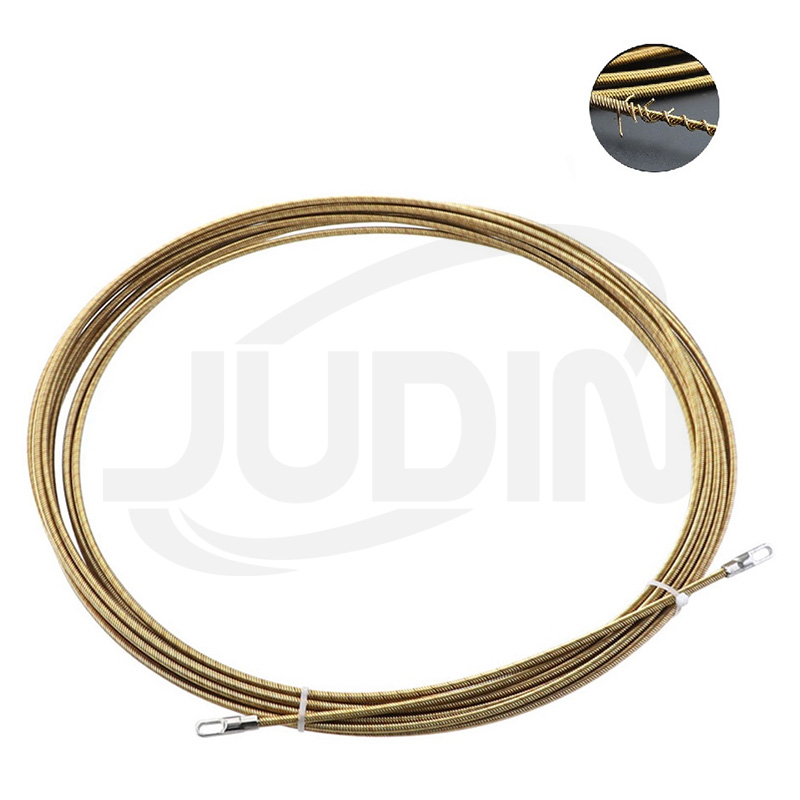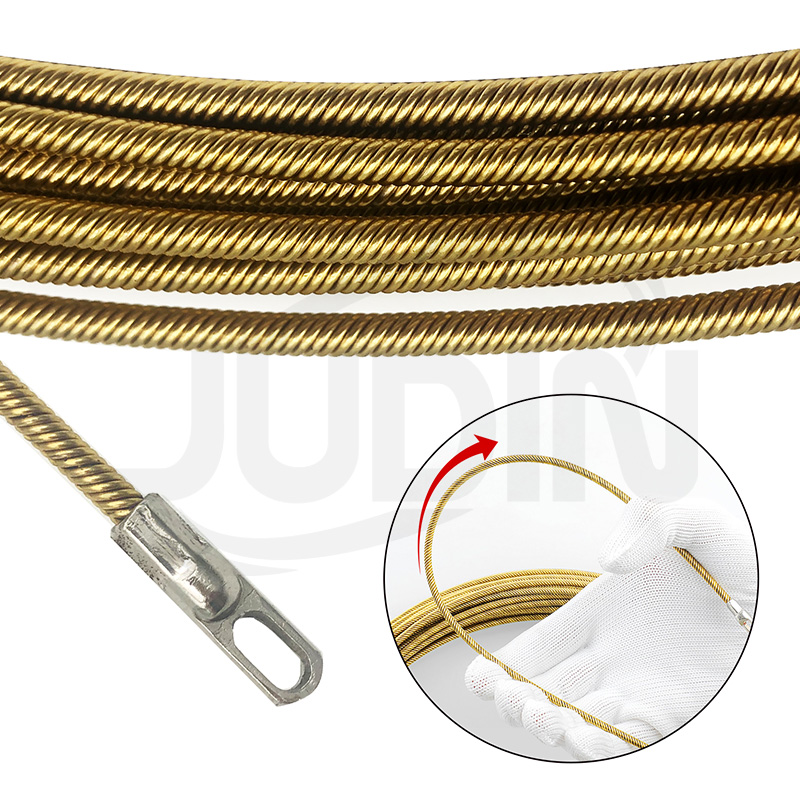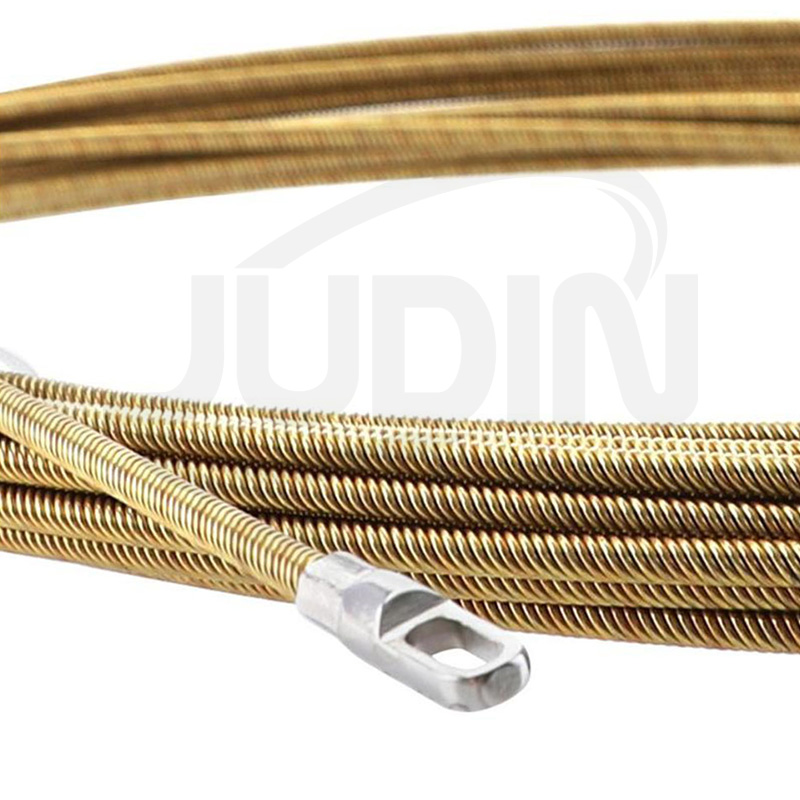Fish tape helps you install wires quickly and safely. First, gather your tools and check the workspace. Next, feed the fish tape through the conduit. Attach the wire securely, then pull the tape back. Finish by inspecting your work. Always wear gloves and keep your area clear to stay safe.
Key Takeaways
- Choose the right fish tape material and length for your project to ensure strength, safety, and ease of use.
- Follow step-by-step instructions carefully: prepare your tools, feed the tape slowly, secure the wire tightly, and pull steadily to avoid damage.
- Always prioritize safety by wearing gloves and glasses, checking that power is off, and inspecting your work to prevent accidents and ensure a reliable installation.
Choosing the Right Fish Tape
Types and Materials of Fish Tape
You can find fish tape in several types and materials. Each type works best for different jobs. Steel fish tapes, like the Full Spring Steel Cable Puller, offer strength and flexibility. You can use them for long or tough wire runs. Fiberglass fish tapes do not conduct electricity, so you stay safer when working near live wires. Nylon fish tapes are lightweight and easy to handle. They work well for short or simple wire pulls.
Tip: Always check the material before you start. Choose steel for strength, fiberglass for safety, and nylon for easy jobs.
Here is a quick comparison:
| Material | Strength | Flexibility | Safety Near Live Wires |
|---|---|---|---|
| Steel | High | High | Low |
| Fiberglass | Medium | Medium | High |
| Nylon | Low | High | Medium |
Selecting the Right Length for Your Project
You need to pick the right length for your project. Short fish tapes, around 25 to 50 feet, work well for home wiring. Longer tapes, up to 100 feet or more, help with commercial or industrial jobs. Measure your conduit path before you choose. Always select a tape that is a bit longer than your planned run. This extra length helps you handle bends and turns.
Note: Using the right length saves time and makes your wire installation much easier.
Step-by-Step Fish Tape Guide
Preparation and Setup
Start by gathering all your tools. You need your fish tape, wire, electrical tape, gloves, and safety glasses. Check your work area for any obstacles. Make sure the conduit is clear and dry. Put on your gloves and safety glasses before you begin. Measure the length of the conduit so you know how much wire you need. If you use a Full Spring Steel Cable Puller, check that it is straight and free from kinks.
Tip: Always inspect your tools before starting. A damaged fish tape can slow you down or cause injury.
Feeding Fish Tape Through Conduit
Hold the fish tape at the entrance of the conduit. Push the end of the tape into the conduit slowly. Use steady pressure. Guide the tape through bends by gently twisting it. If you feel resistance, stop and pull back a little. Try again with a gentle push. The spring steel design helps the tape move smoothly through tight spaces.
- Keep the tape as straight as possible.
- Avoid forcing the tape if it gets stuck.
- Watch for sharp bends or blockages.
Attaching and Securing the Wire
Once the fish tape reaches the other end, attach the wire to the terminal hole at the tip. Strip about one inch of insulation from the wire. Loop the bare wire through the hole in the tape. Twist the wire around itself to make a tight connection. Wrap the joint with electrical tape. Cover any sharp edges to protect the wire and help it slide through the conduit.
Note: Secure the wire tightly. Loose connections can cause the wire to slip off during pulling.
Pulling Wire with Fish Tape
Go back to the starting point. Hold the fish tape handle firmly. Pull the tape back through the conduit slowly. Guide the wire as you pull. Ask someone to feed the wire into the conduit if possible. This keeps the wire straight and prevents kinks. If you feel resistance, stop and check for snags. Pulling too hard can damage the wire or the tape.
- Pull in short, steady motions.
- Keep the wire and tape aligned.
- Do not rush this step.
Finishing and Inspection
When the wire comes out, disconnect it from the fish tape. Inspect the wire for any damage. Check the insulation for cuts or scrapes. Make sure the wire is the correct length. Coil up your fish tape and store it safely. Clean up your work area and put away your tools.
Reminder: Always double-check your work. A careful inspection ensures a safe and reliable installation.
 |
 |
 |
Fish Tape Safety and Troubleshooting
Essential Safety Precautions
You should always put safety first when working with electrical tools. Wear gloves to protect your hands from sharp edges. Safety glasses keep your eyes safe from dust and debris. Make sure the power is off before you start any wire installation. Keep your work area clean and dry. If you use a steel fish tape, avoid contact with live wires to prevent electric shock.
Tip: Double-check that the circuit is off using a voltage tester before you begin.
Common Mistakes to Avoid
Many people rush and make mistakes. Do not force the fish tape if it gets stuck. This can damage the tape or the wire. Always secure the wire tightly to the tape. Loose connections may cause the wire to slip off inside the conduit. Avoid pulling too hard, as this can stretch or break the wire.
Handling Bends and Blockages
Bends and blockages can slow you down. Use gentle, steady pressure when you guide the tape through a bend. If you hit a blockage, pull back a little and try again. Sometimes, twisting the tape helps it move past tight spots. For tough bends, ask someone to help guide the wire from the other end.
| Problem | Solution |
|---|---|
| Sharp bend | Twist and push gently |
| Blockage | Pull back, try again |
Tips for Difficult Wire Runs
Long or complex wire runs need extra care. Use a lubricant made for electrical work to help the tape slide smoothly. Mark the fish tape with tape or a marker to track your progress. If you work with a partner, one person can feed the wire while you pull. Take your time and check for snags often.
You can install wires quickly and safely by following each step carefully. Always check your tools, wear safety gear, and inspect your work. Use this checklist for every project:
- Gather all tools and safety gear
- Inspect the conduit
- Feed the fish tape slowly
- Secure and pull the wire
- Check your results
FAQ
How do you clean fish tape after use?
Wipe the tape with a dry cloth. Remove any dirt or debris. Store it in a cool, dry place to prevent rust.
Can you use fish tape for outdoor wiring projects?
Yes, you can use fish tape outdoors. Make sure the tape is dry before storage. Always check for damage after each use.
What should you do if fish tape gets stuck in the conduit?
Try pulling back gently. Twist the tape as you pull. If it remains stuck, remove the tape and inspect the conduit for blockages.
Post time: Jul-14-2025








